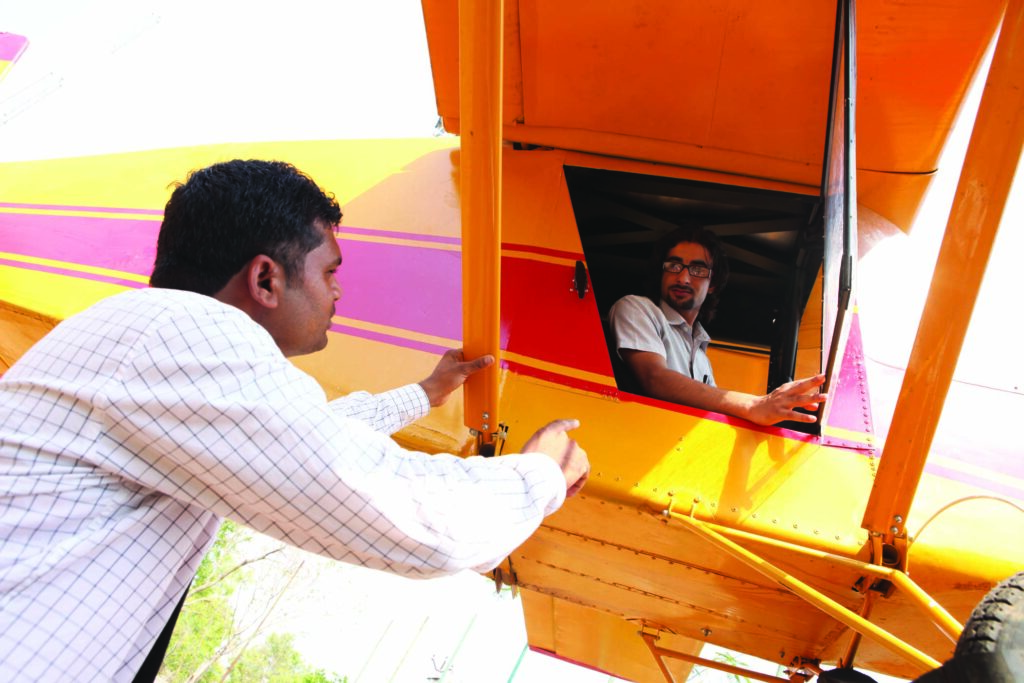Aeronautical Engineering
Department



Welcome
About the Department
Aeronautical engineering is one of the most challenging fields of engineering with a wide scope for growth. This field deals with the development of new technology in the field of aviation, space exploration and defence systems. It specializes in the designing, construction, development, testing, operation and maintenance of both commercial and military aircraft, spacecrafts and their components as well as satellites and missiles.
The course curriculum of aeronautical engineering is made up of maintenance as well as design aspect of the present day aviation and aerospace engineering. It prepares graduates with knowledge, problem solving ability, hands-on skills to enter carrier in the design, installation, manufacturing, testing, evaluation, technical sales, or maintenance of aeronautical / aerospace systems.

Aerodynamics Laboratory
A subsonic wind tunnel with a test section size of 300mm x 300mm for the study of pressure and velocity distribution and force measurements on various models along with six component (three forces and three moments) measuring device has been established. For flow visualization studies heleshaw apparatus and water flow channel have been installed in the laboratory.
Aircraft Structures Laboratory
The objective of conducting the aircraft laboratory is to make the students understand and appreciate various principles and theorems involved in the theory of aircraft structures, vibrations and experimental analysis, by doing simple and advanced experiments and analysing the results. This will immensely help the students to enrich their knowledge in the design of various aircraft structural components, namely, wing fuselage, landing gear, control surfaces etc. Special equipments like two dimensional photo elastic set up, fatigue-testing machine, electronic stroboscopes, viscous damping set up, forced vibration set up are also to be installed in the nearest future. It is also proposed to set up facilities for fabricating fiber composite laminates, since they find many applications in nearly all structural parts. It is one of the visions of the department to make this laboratory, a very special one of its kind of aircraft structures in this part of the country.
Aircraft Structures Repair Laboratory
This laboratory is fully equipped with TIG welding (for both steel and aluminium), MIG welding and arc welding equipments for training students in the area of welding of different materials used in aircraft industry. Pipe bending and pipe riveting experiments were also incorporated.
Aero Engine Repair and Maintenance Practices Laboratory
An engine is the heart of any aircraft. Knowing its various components, their working principles, repair and maintenance practices is of utmost importance to an aeronautical engineer. Throwing light into this fact, the aeronautical engineering department is equipped with an aero engine repair and maintenance practices laboratory. This engine model C90 (piston engine).
Practical knowledge of aero engine repair and maintenance practices is gained by physically dismantling, inspecting and assembling of various components/unites such as aero engine piston, cylinder, carburettor, oil filter, exhaust unit and intake guide vanes.
Propulsion Laboratory
This laboratory is equipped with aircraft jet engines and piston engines, nozzle performance studies, free and forced convective heat transfer measurements, study of free jet, wall jet, bomb calorimeter for determination of heat of combustion of fuels, propeller performance test rig etc.
lnplant training/Industrial visit
- Our students and staff members attended Flight Training Program inIIT
- Our students and staff members attended Flight Training Program in IIT Kanpur
- Our Aero students attend the “Recent Trend In Aerospace Propulsion” workshop by ISRO in Hindustan college Coimbatore
- ALBATROSS Company, Bangalore
- HAL, Bangalore
- NAL, Bangalore
- TAAL, Hosur
- Air Show, Bangalore
Achievements
- Our students participated in Three Days Work shop on “AEROTRIX” and won the first prize atIIST, Trivandrum
- Our Aero students attend the “Recent Trend In Aerospace Propulsion” workshop by ISRO in Hindustan college, Coimbatore
- Our Department students received a shield from “Deccan Herald” for getting best trainee Award in Bangalore
- Our students had got training of Glider manufacturing in Bangalore
- Our students had got training in ALBATROSS Company and learn the manufacturing of Aircraft Components
- The Practical class of Engine Maintenance inIIT Kanpur is attended by our students
- Our Aero students had attended lot of Symposiums and Conferences in many colleges around globe
- Our Aero students get awarded as Smart Engineer in Thanthai Periyar College, Vellore
- Our Aero students Presenting their paper
- Our students along with Chairman and staff attended AIR INDIA conference Hyderabad
- Our Aeronautical students attend the Air Show in Yelanaka Air base
- Our students Designed and Fabricated a many RC, Airplane models
Educational Tours
- II yr & III Yr Educational Tour – Tamil Nadu and Kerala
- Final Year Educational Tour- All India
Educational Tours
The department conducts national and international conferences to share their knowledge obtained through research with other researchers in India and abroad. International conference on Futuristic Trends in Aeronautical Engineering
Links
Contacts Us
- tcet2008@gmail.com
- 04183203083
- 9842116111
Location
- Arunachala City, Ponnur Hills, Vandavasi - 604505 TV Malai Dist, Tamilndu, India.
©2023. TCET. All Rights Reserved.


